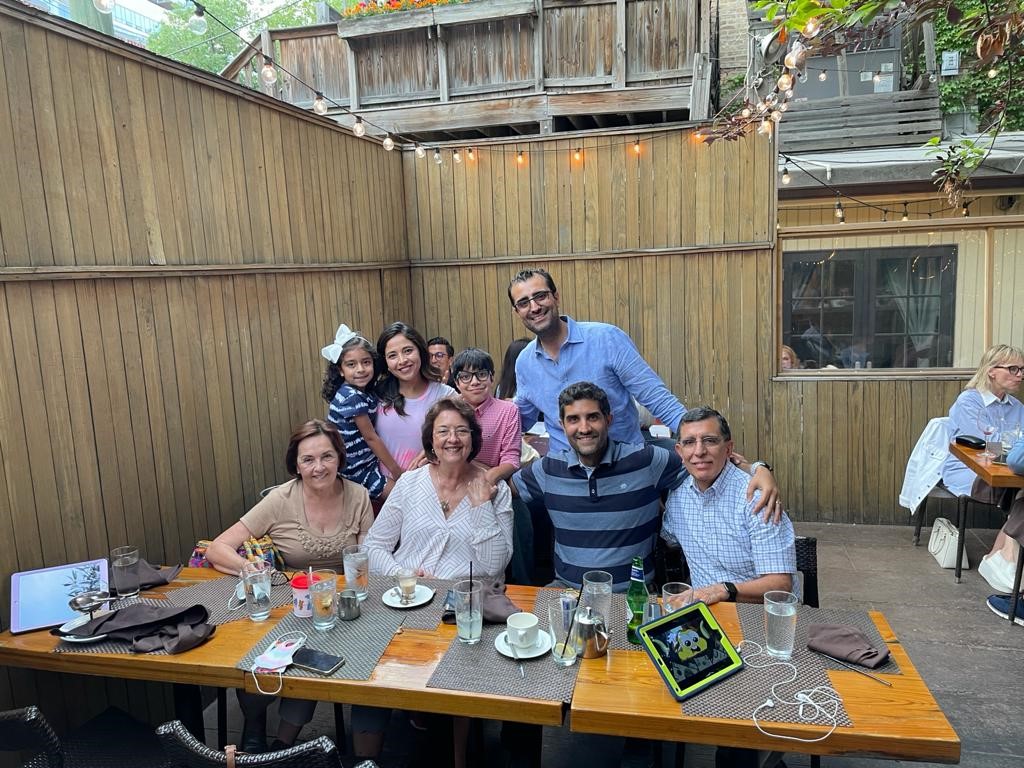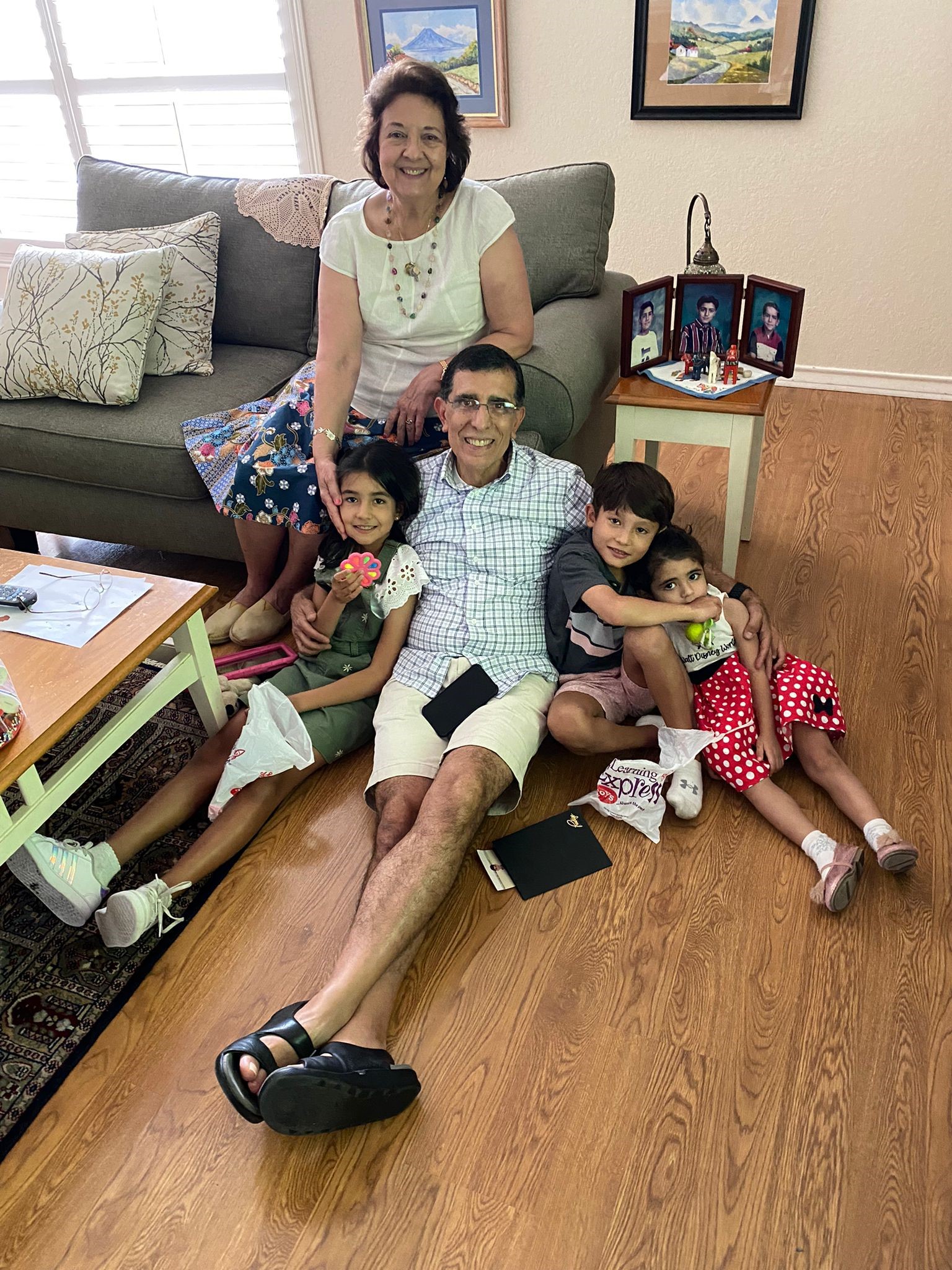- Your full title as you’d like it to appear.
Antonio Anzueto, MD, ATSF
Professor of Medicine, Pulmonary/Critical Care Division,
Department of Medicine, University of Texas, Health, San Antonio
Section chief, Pulmonary,
South Texas Veterans Health Care System, San Antonio Tx
- Three statements about you – two true, one false.
Do you think Dr. Anzueto:
- Likes to travel?
- Likes to exercise every day?
- Is a great painter?
- Give us your ‘elevator pitch’ biography.
I’m a professor of Medicine at UT San Antonio, and I graduated from University of San Carlos in Guatemala. My friends went to medical school, so I did as well, and I quickly learned that I didn’t like surgery, pediatrics, or OB/GYN, so I did internal medicine. During my residency, I met a pulmonologist who asked me to help him with a research project, which led me to pulmonary medicine.
I came to the U.S. to work in research in San Antonio in the 1980’s, and after that I decided to repeat my residency and do my fellowship. And I’ve been at the faculty at San Antonio since 1991. I tell people “Don’t invite me to your house. If I like it, I tend to stay.” I’ve been here for almost 38 years, when I was only planning to come for one. I went from an assistant to associate to full professor, and I’m also a section chief at the V.A.
me to your house. If I like it, I tend to stay.” I’ve been here for almost 38 years, when I was only planning to come for one. I went from an assistant to associate to full professor, and I’m also a section chief at the V.A.
The ATS has been my professional home since I went to my first ATS meeting as a research fellow in Kansas City, MO in 1983. There were barely 300 people! From 1988 to 2019, I’ve gone to every single ATS meeting, so I’ve gotten to see the growth. What’s also exciting, especially coming from Latin America, is seeing the growth in international participation. I’ve served on several ATS committees, and I’ve always worked on increasing the communication, interaction, and participation of our international members.
I help to create a combined session at the ATS annual conference call “Buenos Dias ATS” to increase the participation of Spanish and Portuguese speaking pulmonary societies, and it’s now a feature of the ATS meeting. Now ERS is doing something similar, and the ATS is working with other groups too to help them develop with the organization. I’m excited to see this growing with worldwide organizations because it really shows that we are a global Society. It’s such good energy and I can’t wait until 2022 when we can meet in person.
- What would you tell yourself as an Early Career Professional?
I think you should keep your eyes open and jump at opportunities. I think it’s important to have a variety of scientific interests, to be able to grow in one area and see what other areas emerge.
One of my friends has asked me, all my academic life, ‘When are you going to focus?” and I say, “I will focus when I die.” I’m in pulmonary medicine and I know I’m going to do pulmonary for the rest of my life, so I like to take all the available opportunities – infections, pneumonia, COPD, sepsis, mechanical ventilation.
- If you weren’t in medicine, and were in a different industry altogether, what would you be?
I would probably work with the airline industry. I like the airline industry because it’s similar to a hospital. The structure, teamwork, are very similar, but the airline industry has no inventory. I’d like to be in an industry that would require organization, logistics, and interaction with people.
Also, the free flights don’t hurt at all!
- What is your favorite way to spend a day off?
This has changed since the pandemic. Pre-pandemic, I’d be traveling somewhere for business or family or for any excuse I could find. During the pandemic, I’ve spent my time off at home, cleaning, doing house projects. 
I also like to spend time with family as much as I can.
- What areas of medicine are you most excited to see develop?
I think what’s really exciting is our increasing understanding of our genetics, and the increasing awareness that we are made of bacteria as well as genes. We are learning how the different bacteria in our body are not only been responsible for infections but also all kinds of other conditions.
I think in the next 10 years it’s going to be very exciting to have genetics- targeted therapies, as well as treatments that try to establish equilibrium in our bacteria in all areas of the body, from the lungs to the skin, to the gut.
- What is one advancement in your field you’d like to see in your career?
I think we need to go back to the basics. In my area of chronic lung disease and COPD, I think there’s a huge need for early recognition and diagnosis. I believe it’s shameful that people may be complaining of their symptoms for years, but we don’t recognize the disease process in its early stage. Then, once it is diagnosed, we find that if we could have done an intervention years before, we could have changed the progression of that disease.
I’m really hopeful that smart phones and other means of communication are going to be a huge way for us to progress in that area. I have patients that have had atrial fibrillation diagnosed by their Apple watch, and there are apps on the Apple watch can be a pulse oximeter for example, so the technology is here to prevent or identify our medical conditions sooner, so we don’t have to be reactive.
- Which statement did you make up?
I’m a terrible painter, and I even have terrible handwriting. I used to joke my kids were asking the wrong person for help on school projects.

